How to Prune Your Flowering Shrubs for the Best Blooms
http://decor-ideas.org 04/05/2015 03:13 Decor Ideas
It’s no wonder many people are confused about how and when to prune their flowering shrubs — or if pruning is really necessary. Drive down any neighborhood street and you’ll notice flowering shrubs that have been pruned to different shapes, from geometric cupcakes, balls and even squares to more natural, open forms.
Let’s take a closer look at the answers to these questions so that you can prune your shrubs with confidence. These suggestions and plant selections reflect my experience gardening in the desert Southwest, but they should translate for most flowering shrubs. Contact your local cooperative extension office or Master Gardener for information on when and how best to prune specific flowering shrub species.
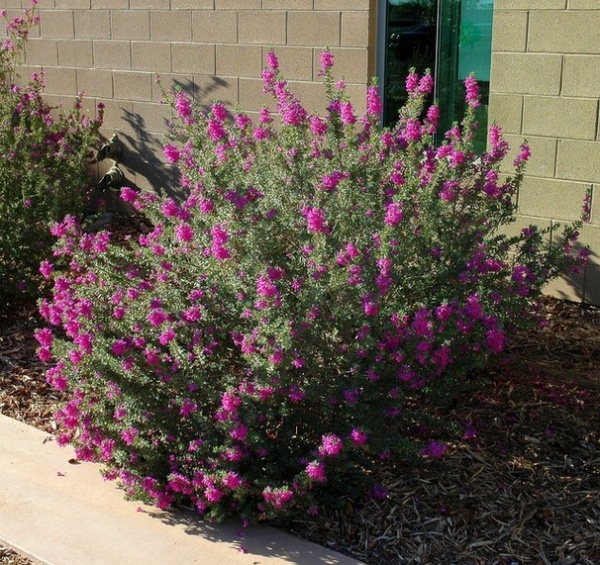
The Benefits of Proper Pruning
Pruning promotes flowering, reduces pests and contributes to the plant’s overall health, all while helping it maintain an attractive shape. Pruning can also serve to keep shrubs at a desired size, although this can sometimes lead to excessive pruning.
Shown: Green Cloud Texas ranger (Leucophyllum frutescens ‘Green Cloud’, USDA zone 7; find your zone) in flower
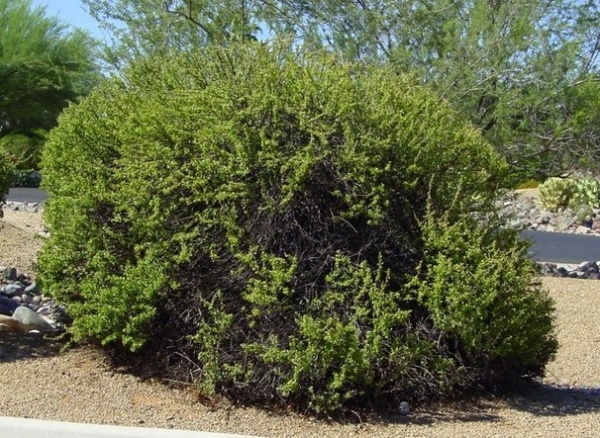
Shrubs can survive without any pruning at all, but in a landscape setting, proper pruning practices will ensure that your shrubs will remain healthy and attractive. As time passes, branches of flowering shrubs become woody and unproductive. Pruning these old branches helps to stimulate new, attractive growth that produces more flowers. It also helps get rid of pests residing in old wood and improves air circulation, which is important to the health of shrubs.
Shown: A large, overgrown shrub in need of pruning
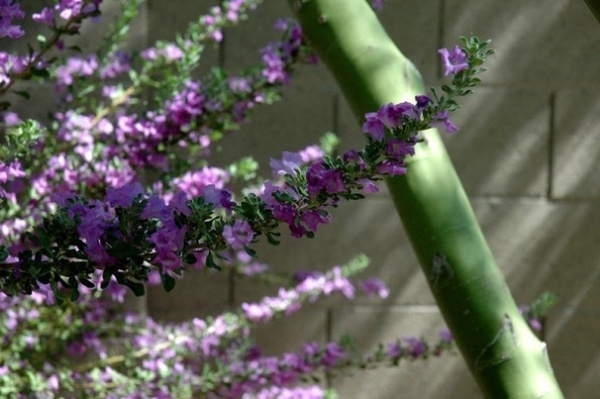
When to Prune
When to prune will depend on which season the shrub flowers in. Shrubs that flower in early spring produce flowers on wood grown in the previous year, so it’s best to prune them in late spring, just after they finish blooming. If you wait too much longer, you’ll reduce the amount of flowers they will produce the next year. Summer-blooming shrubs flower on new growth, so they should be pruned in early spring to stimulate new growth.
Shown: Flowering Rio Bravo sage (Leucophyllum langmaniae ‘Rio Bravo’, zones 8 to 10)
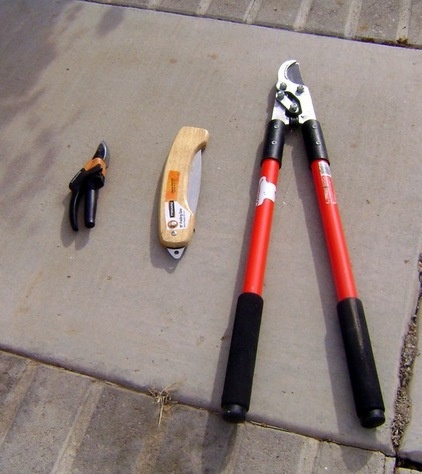
Tools
The best tools for pruning shrubs are (shown here from left to right) hand pruners, a pruning saw (for thick branches) and loppers. A hedge trimmer or shears can also be used in some situations.
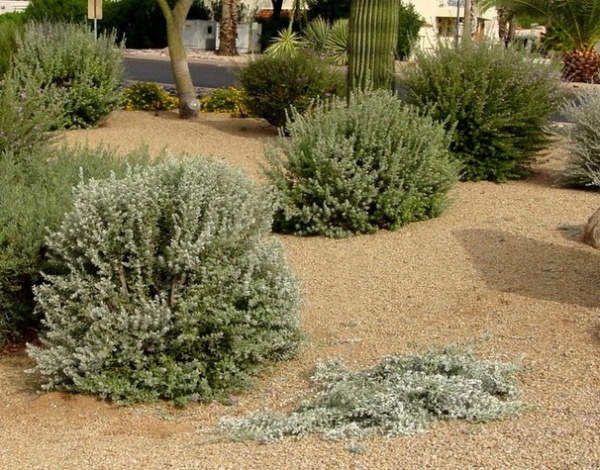
Correct Pruning Methods
There are different ways to correctly prune flowering shrubs; we’ll cover the three most common methods.
1. Heading. This means removing individual wayward branches that are excessively long by pruning them back to the desired height you want your shrub to be. This method can usually be done using hand pruners and is a great option for those who want a slightly more manicured appearance for their flowering shrubs. This pruning is done to reduce the size of the shrub while still maintaining its natural form.
2. Thinning. This involves pruning out one-third of the oldest branches at the base of the shrub each year. Loppers are the best tool for this type of pruning, because they can reach underneath the shrub. A pruning saw can also be used for thick branches. Thinning is a good pruning method for people who desire a more naturally shaped flowering shrub.
Shown: Texas ranger shrubs lightly pruned with hand pruners to remove wayward (overly long) branches
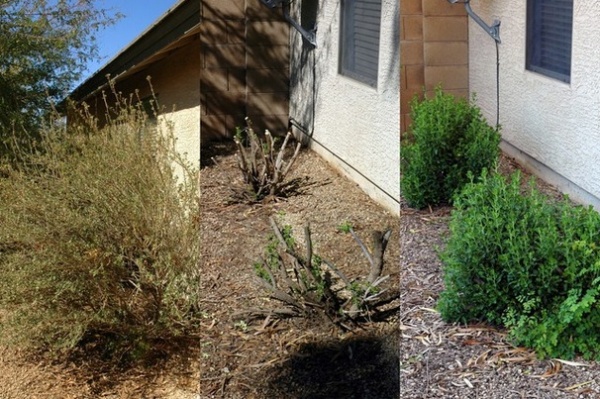
3. Rejuvenation. This type of pruning rejuvenates shrubs by removing all growth down to 1 foot from the ground. While this type of severe pruning initially leaves nothing more than short, bare branches poking up from the ground, within a few weeks attractive new growth will appear and will soon grow into a beautiful shrub. Some flowering shrubs will bloom the same year, but this is dependent on the species of shrub — slow-growing shrubs may not flower again that year.
Loppers, a pruning saw and even hedge trimmers can be used for this type of pruning. Because it can be hard to get close to the interior branches using loppers alone, a hedge trimmer can be used to remove the thinner outer branches, allowing you to get in closer with your other pruning tools. This type of pruning can be done every three years or so to keep shrubs attractive, healthy and at a manageable size.
Shown: The phases of rejuvenation pruning
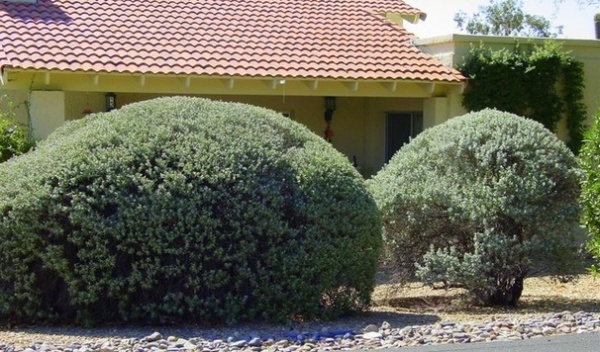
Rejuvenation pruning can transform an overgrown shrub filled with woody growth, but old shrubs that have been repeatedly sheared over the years do not always respond to this type of pruning and may not bounce back from it. In cases such as these, it is best to replace them. The majority of flowering shrubs respond well to rejuvenation but not all species do, so it’s best to check with your local cooperative extension office first.
Shown: Old, overgrown Texas sage shrubs showing the negative results of repeated shearing over the years
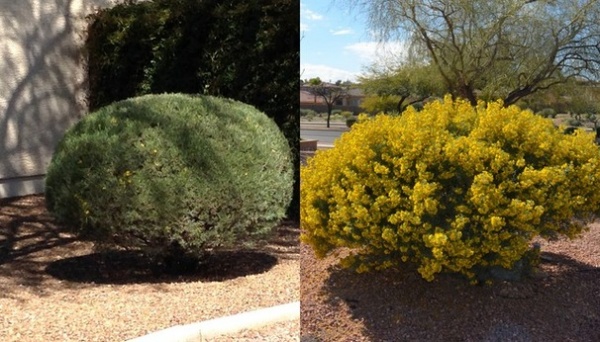
When Pruning Goes Wrong
While pruning flowering shrubs is important for their health and attractiveness, it can have negative effects if done incorrectly. Flowering shrubs are most commonly pruned incorrectly when they are overplanted or aren’t given enough room to reach their mature size, or when they are pruned by someone who doesn’t know what they are supposed to look like or how to correctly prune them. This usually involves shearing.
Repeated shearing is most often done with hedge trimmers, and invloves removing the top 2 to 3 inches of outer growth, including the flower buds. This strips away flowering shrub’s unique shape and creates a dense mat of leaves that looks like a green blob, and sometimes removes the shrub’s ability to flower at all.
Other negative effects from excessive pruning of flowering shrubs include stress to the plant’s heath, as the shrub will have to constantly work to replace the leaves lost to pruning, which are what makes the food for the plant. As a result, excessive pruning makes shrubs grow faster and use more water than those allowed to grow into their more natural shape. This repeated cycle can lead to a shortened lifespan for shrubs.
Shown: Side-by-side comparison of feathery cassia (Senna artemisioides, zone 8) shrubs; one has been formally pruned (sheared) and one has been pruned correctly
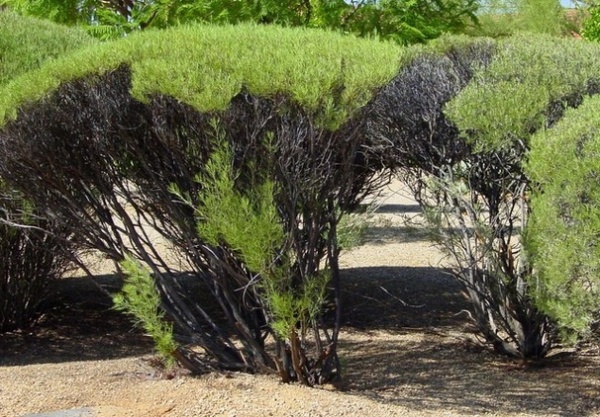
Repeated shearing of shrubs creates a dense mat of leaves that makes it hard for the sun to penetrate the interior. As a result, the interior areas of shrubs don’t produce leaves, and parts of them can die off.
Shown: Damage to desert cassia (Senna nemophila, zones 8 to 10) from years of repeated shearing
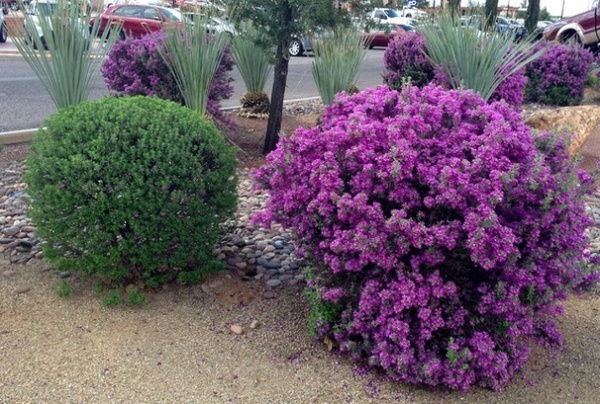
How to Plan Ahead
In addition to implementing proper pruning practices, researching your existing shrubs or any new ones you plan to buy is key to avoiding excessively pruned flowering shrubs. Learn how large they will become and be sure you allot enough room for them. Secondly, learn what they should look like when maintained properly.
If you prefer a more formal garden stye, you might consider using shrubs with a more compact growth habit or that are prized for their foliage and take well to repeated shearing, such as boxwood (Buxus spp) and myrtle (Myrtus spp). Large flowering shrubs can be used as a backdrop for a more formal landscape.
Shown: Green Cloud Texas ranger on the left, whose flowers were just pruned off, transforming it into a round green ball as opposed to the beautiful, purple flowering shrub it used to look like on the right. Unfortunately, the one on the right was next in line for the landscaper’s hedge trimmers.
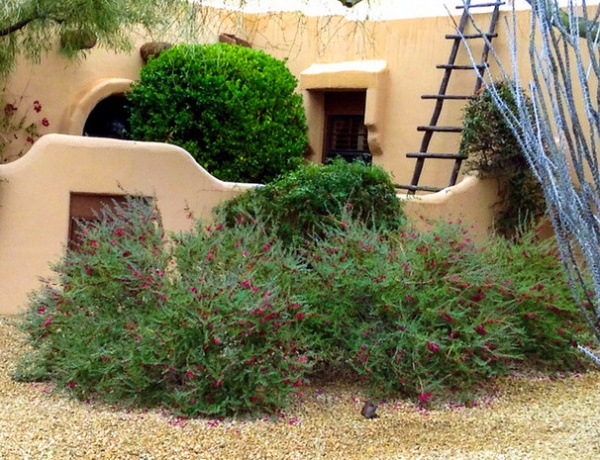
Armed with the knowledge of how to correctly prune flowering shrubs, you’ll have a landscape that’s filled with beautiful flowering shrubs and no green balls in sight.
Shown: Valentine bush properly maintained by pruning once a year after flowering has finished in late spring
More: See what else you can do in your spring garden
Related Articles Recommended












